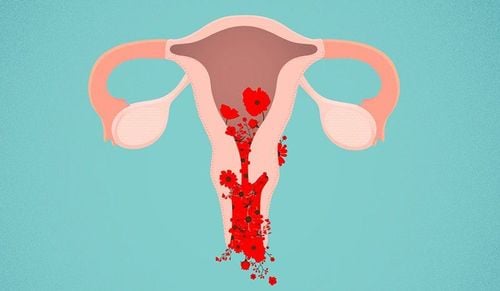Bartholin's gland inflammation is a condition commonly found in women of reproductive age. However, not all women are at risk of developing this condition. Is Bartholin's gland inflammation dangerous, and can it resolve without treatment?
1. What is Bartholin's gland inflammation?
The Bartholin's glands are small, spherical glands about 1 cm in diameter, located under the skin on both sides of the vaginal opening. These glands are composed of columnar mucus-secreting cells that produce a lubricating fluid, which helps keep the vagina moist and facilitates lubrication during sexual intercourse.
When the Bartholin's gland becomes inflamed, it often manifests as a cyst. The severity of the condition depends on the size of the cyst. Based on this, doctors will assess whether the cyst has become infected, potentially worsening the condition, to determine the appropriate treatment method.
The primary cause of Bartholin's gland inflammation is the blockage of the gland ducts while the glands continue to secrete mucus. This leads to an accumulation of fluid in the gland. The blockage is often caused by infections from sexually transmitted bacteria such as Chlamydia, Neisseria gonorrhoeae (gonorrhea), or intestinal bacteria like Escherichia coli (E. coli). Trauma to the genital area can also contribute to the blockage and subsequent inflammation.
Women are at risk of developing Bartholin's gland inflammation at any age; however, the incidence is higher among women aged 20–29. Factors that increase the risk of Bartholin's gland inflammation include:
- Women who are pregnant
- Women with diabetes
- Engaging in unsafe sexual practices, which facilitate bacterial entry and increase susceptibility to sexually transmitted infections.
2. Is Bartholin's gland inflammation dangerous?
In the early stages, when the Bartholin's gland cysts are small, they usually do not cause any symptoms. These cysts are often only discovered when the patient notices a small, painless lump just outside the vaginal opening or when the doctor detects it during a gynecological exam.
However, if the Bartholin's gland inflammation progresses and the cyst grows larger than 1 cm in diameter, it may cause pain and discomfort when sitting or during sexual intercourse.
If the Bartholin's gland cyst becomes infected, it will swell, harden, and become filled with pus, leading to symptoms such as fever, severe pain, and difficulty sitting or walking. Infected Bartholin's gland cysts often develop into an abscess, and this abscess can grow rapidly, typically within 2-4 days.
Bartholin's gland inflammation prevents the gland from secreting lubricating fluid into the vagina, causing a burning sensation during sexual intercourse. Additionally, it can irritate the bladder, leading to urinary disturbances. Bartholin's cyst or abscess typically occurs on one side of the vaginal opening.
To assess the severity of Bartholin's gland inflammation, it is necessary to monitor various factors, such as the extent of the infection, the risk of further infection, and the level of pain experienced in the body.
3. Can Bartholin's gland inflammation resolve on its own?
Through examination and testing, depending on the condition of each patient, the doctor will determine the most appropriate treatment for Bartholin's gland inflammation.
- For small Bartholin's cysts that do not cause symptoms like pain or discharge, the cyst may resolve on its own without treatment. However, regular follow-up visits with your doctor are necessary to monitor the cyst's development.
- For mild swelling or inflammation of the Bartholin's gland, a hot water rinse multiple times a day may help the cyst rupture more quickly. Applying a warm compress can also help alleviate symptoms. Your doctor may prescribe antibiotics along with pain-relieving and anti-inflammatory medications to reduce pain and dissolve the cysts.
- For larger Bartholin's cysts that have developed into abscesses, causing swelling, pain, infection, and pus discharge, there are two common treatment methods:
- Incision and drainage of the Bartholin's cyst: In this method, the doctor will inject a local anesthetic, use a scalpel to make a small incision in the cyst to allow the fluid to drain out, and then stitch the edges of the cyst with dissolvable sutures to promote healing.
Bartholin's cyst marsupialization: This method involves completely removing the Bartholin's cyst. After the procedure, your doctor will typically prescribe antibiotics, pain relievers, and anti-inflammatory medications to reduce swelling and prevent infection. You will also need to use antiseptic solutions to clean the perineal area.
4. Preventing Bartholin's Gland Inflammation
It is difficult to completely prevent Bartholin's gland inflammation. However, adopting the following healthy habits can help prevent infections and minimize the risk of developing an abscess:
- Always maintain proper hygiene of the genital area, keeping it dry and clean, and use appropriate cleansing solutions. When cleaning the genital area, always wipe from front to back to avoid transferring bacteria from the anus to the vagina. Note that only the outer area should be cleaned; avoid douching or cleaning deeply inside the vagina.
- Practice safe and healthy sexual activity to reduce the risk of contracting sexually transmitted infections.
- If you notice a small lump at the vaginal opening or experience pain or swelling in the vaginal area, seek medical attention promptly for proper examination and treatment.
Although Bartholin's gland inflammation is relatively rare, it is treatable and can even resolve on its own if detected early by a doctor. Therefore, if you notice any unusual signs in the genital area, seek medical advice immediately for accurate diagnosis and timely treatment.
To arrange an appointment, please call HOTLINE or make your reservation directly HERE. You may also download the MyVinmec app to schedule appointments faster and manage your reservations more conveniently.








